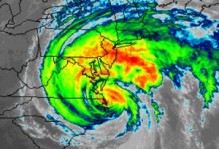Getting it right
The heaven-born mission of journalism is to disseminate truth; to eradicate error; to educate, refine, and elevate the tone of public morals and manners, and make all men more gentle, more virtuous, more charitable, and in all ways better, and holier, and happier.
—Mark Twain, Journalism in Tennessee
Whenever I slip out to commit an act of premeditated journalism, I always attempt to “get it right.” Nonfiction writers often talk about getting it right, and we’re referring to not just the facts, ma’am, but also the assembly of a clear, compelling, explanatory narrative that is true to the essence of the story and to its context.
But first of all, you have to have the facts correct. Or at least mostly correct, and that’s not always as easy as it might sound. The College and the Commonwealth have entrusted me to talk to expert researchers and then to translate their splendid accomplishments into language accessible to the lay reader. I encounter a kaleidoscopic array of facts on a daily basis and when it gets busy, I’ll have to ask you to imagine a kaleidoscope shot through a fire hose. I may be required, in the course of a week, to discuss quantum mechanics, to write about geopolitical implications of the Treaty of Utrecht and to know who Laocoön was and how to spell his name. (I always have to look up which o gets the umlaut.)
To get it right here at William & Mary, I make it a practice to ask subjects of a story to review a draft. This practice is by no means universal among journalists and among the working media, it is quite rightly controversial. The draft-review process causes some headaches when the reviewer tries to upset the delicate geometry of my deathless prose, but I have to admit it has saved faculty, College, Commonwealth and writer from embarrassment both potential and real.
I record virtually all my interviews and use either the raw audio or a transcript of the interview to write. Using a recorded interview would seem to solve one large aspect of getting it right, but an audio record only makes getting it right more problematic. People, you may have noticed, don’t always say what they mean. One memorable phone call implored me to change a quote that I used verbatim from the recorded interview: “I know that’s exactly what I said,” Professor Sendjoetwentybucks Orhewilluseyourname told me, “but that’s not what I meant. What this says here violates some of the [laws, principles, standards] of [insert disciple here].”
That was an easy fix and one I was happy to do. More often, it’s me who has something wrong and I am grateful for the corrections. I know writers who would argue with the professor, offering to share the recording in order to prove that the quote was accurate. Those are the kind of highly principled writers who end up either changing the course of history or ranting about their unappreciated qualities from the end stool in a shabby bar. To such a writer, getting it right means being as faithful to the writer-source dialogue as possible. I like to think that I take a longer view.
Writing about research for public consumption—and getting it right—involves a continual balancing act between accuracy and clarity. Accuracy versus clarity is at the heart of many writerly decisions. How much background should you include? What amount of reader familiarity with the subject do you presume? What’s the proper degree to which you should alter a direct quote in the interest of advancing communication? (“None! None! Not one bit, you hack!,” comes the scream from the shadowy and remote barstool.) At what point does simplifying an explanation become dumbing it down?
And that list of accuracy v clarity questions is a short one.
Getting it right, and all that getting it right entails, went through my head following a recent conversation with Courtney Wickel, my present intern. Courtney had just turned in a draft and spoke to me about her concerns with her piece. She was trained as a scientist, so a quote or a bit of information to her no doubt seems akin to a data point. By that I mean the quote, like a piece of data, is something not to be altered just for the sake of convenience.
She told me of having to massage a quote into grammatical place and doing some other minor editorial carpentry with the raw interview. She looked at me with a “did I do the right thing” expression and it’s clear she worried over it.
I gave her the introductory talk on accuracy versus clarity and told her that there was no set of rules I could impart. If she were to become a science writer, it’s something that she would wrestle with for her whole professional life. I do.




No comments.
Comments are currently closed. Comments are closed on all posts older than one year, and for those in our archive.